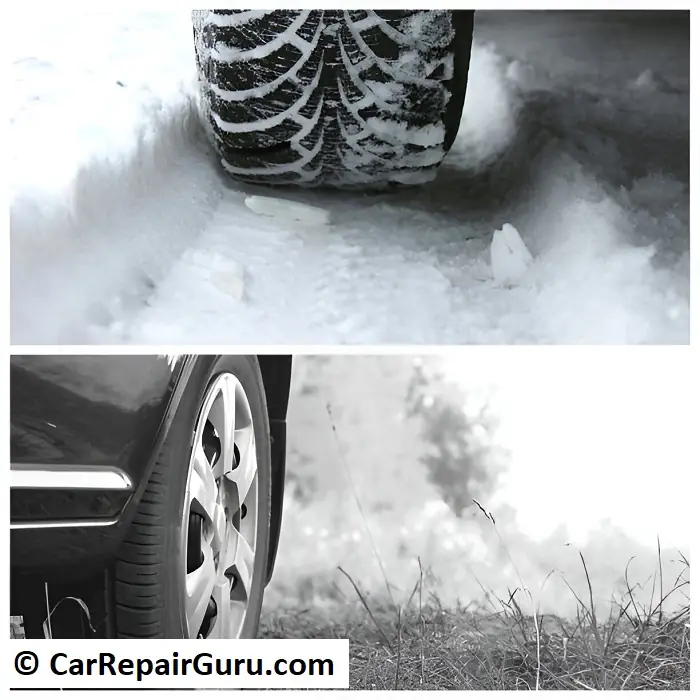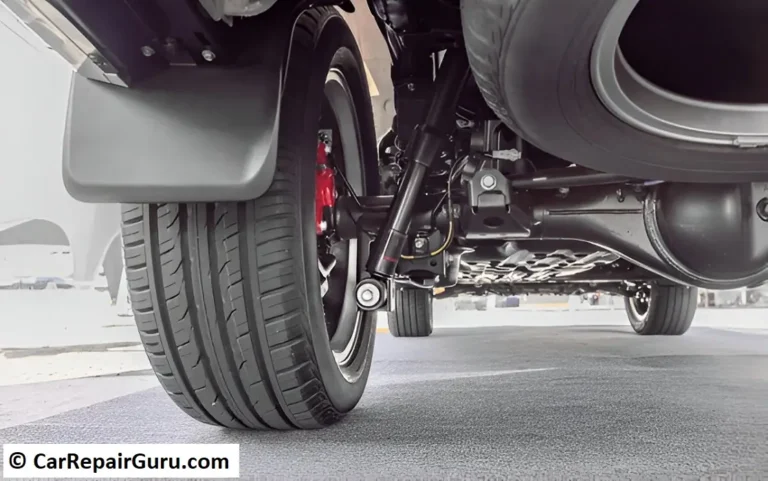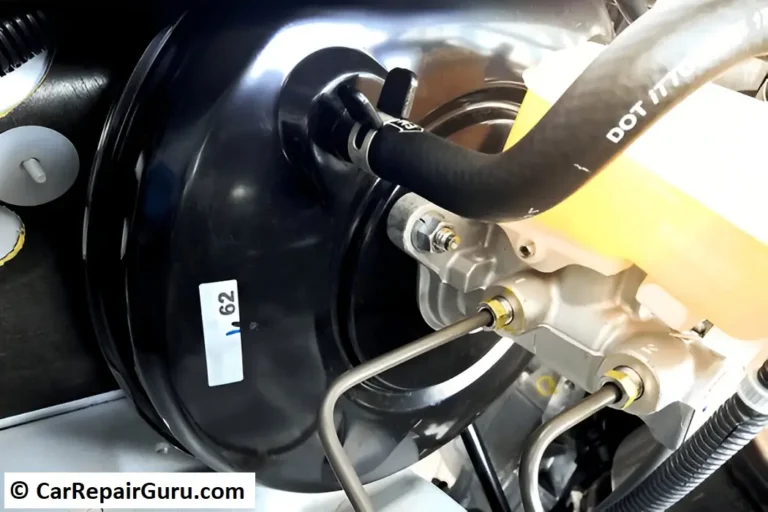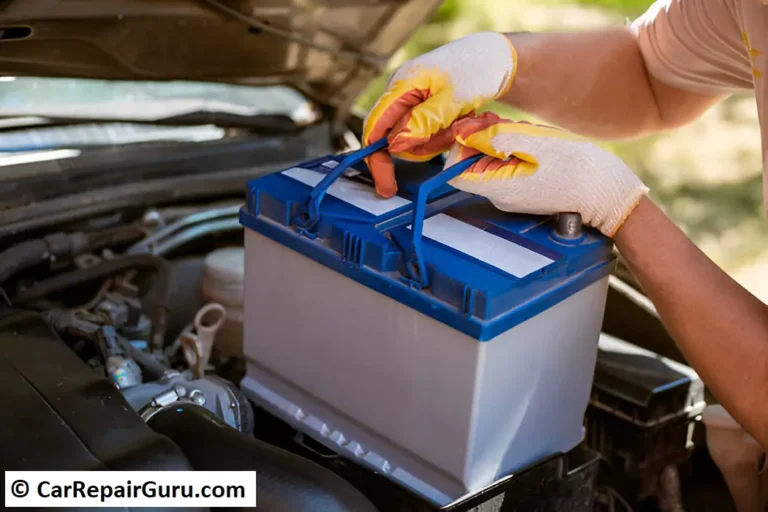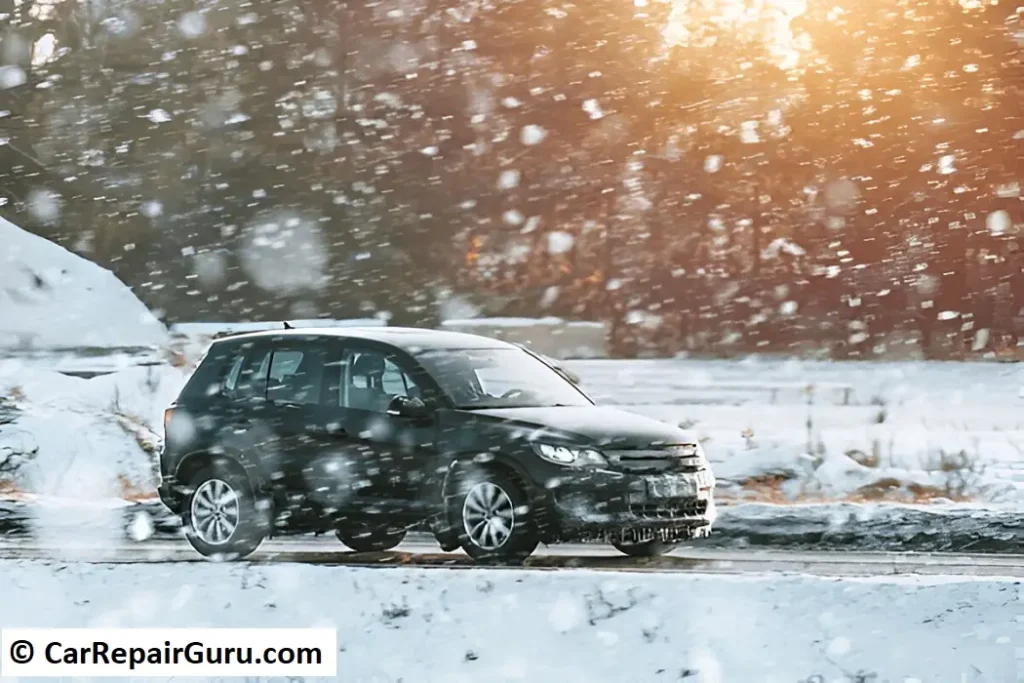
From icy winter roads to slick autumn leaves, each season brings unique driving challenges. A little preparation can mean the difference between a smooth ride and a dangerous situation. Stay safe year-round with these essential seasonal driving tips!
Why Seasonal Driving Tips Matter
Driving conditions change dramatically with the seasons, and adapting your driving habits accordingly is crucial for staying safe on the road. From icy winter roads to the slick surfaces of autumn leaves, each season brings its own set of challenges that can impact vehicle control, visibility, and overall road safety.
Ignoring seasonal driving tips can increase the risk of accidents, breakdowns, and costly repairs. For example, winter demands slower speeds and proper tire traction, while summer heat can lead to tire blowouts and engine overheating. Spring rains create slippery roads, and fall’s fog and early darkness reduce visibility.
By understanding these seasonal hazards and preparing accordingly, drivers can ensure smoother, safer journeys year-round. This guide will walk you through expert-recommended seasonal driving tips for winter, spring, summer, and fall, covering everything from safe driving practices to vehicle maintenance essentials. Stay ahead of the seasons and drive with confidence, no matter the weather!
Winter Driving Tips: Stay Safe on Icy Roads
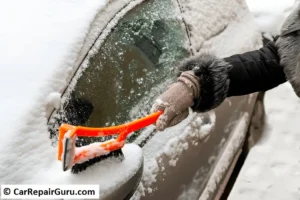
Winter driving can be treacherous, with snow, ice, and freezing temperatures creating hazardous conditions. Proper preparation and cautious driving are essential to ensure safety during the colder months. Here’s how to navigate winter roads with confidence.
Prepare Your Vehicle for Winter
Before winter fully sets in, take the time to winterize your vehicle. Freezing temperatures can impact everything from your battery to your tires, so a few preventive measures can make a significant difference:
- Check Your Battery Health: Cold weather drains battery power, making it harder to start your car. Have your battery tested to ensure it holds a charge, and replace it if it’s weak.
- Inspect Your Tires: Good tire traction is crucial for winter driving. Ensure your tires have at least 3/32 inches of tread, but ideally, opt for winter tires that provide superior grip on icy roads.
- Keep Your Gas Tank Half Full: A partially filled gas tank helps prevent fuel lines from freezing. Plus, having extra fuel can be a lifesaver in case of unexpected delays.
- Check Windshield Wipers and Fluids: Snow and ice can reduce visibility, so install winter-rated wipers and keep your windshield washer fluid full with an antifreeze solution.
Safe Driving Practices
Even with a well-prepared vehicle, adjusting your driving habits is essential for navigating slippery roads:
- Accelerate and Decelerate Slowly: Sudden movements can cause your vehicle to skid. Apply gas and brakes gently to maintain traction.
- Increase Following Distance: On dry roads, a three-second gap between vehicles is enough, but in winter conditions, extend this to at least 8-10 seconds to account for longer stopping distances.
- Avoid Cruise Control on Slippery Surfaces: Cruise control can reduce your ability to react to sudden skids. Always stay in full control of your speed on icy or snowy roads.
- Be Cautious on Bridges and Overpasses: These areas freeze faster than regular roads, making them more prone to black ice. Approach them with extra care.
Emergency Preparedness
Being stranded in winter can be dangerous, so carrying an emergency kit can be a lifesaver:
- Pack Essential Supplies: Include a snow shovel, ice scraper, sand or kitty litter (for traction), jumper cables, flashlight, blankets, extra clothes, snacks, bottled water, and any necessary medications.
- Stay with Your Vehicle if Stranded: Running your car intermittently can help keep you warm, but always ensure the exhaust pipe is clear of snow to prevent carbon monoxide poisoning. Use hazard lights to stay visible to rescue crews.
By following these winter driving tips, you can reduce risks and travel safely through even the harshest winter conditions. Drive smart, stay prepared, and keep safety a priority!
Spring Driving Tips: Stay Alert as the Seasons Change

As winter fades, spring brings new driving challenges, from unpredictable weather to road hazards left behind by the cold months. Here’s how to stay safe on the road this season.
Be Cautious of Changing Conditions
Spring means warmer temperatures, but it also introduces new risks that require extra attention:
- Watch for Increased Traffic: Pedestrians, cyclists, and motorcyclists return to the roads as the weather improves. Stay alert at intersections and residential areas.
- Beware of Potholes: Winter’s freezing temperatures often create potholes that can damage tires, alignment, and suspension. Drive cautiously, especially after rain when potholes can be hidden under puddles.
- Stay Vigilant for Leftover Ice: Even as temperatures rise, shaded areas and elevated roads may still have icy patches, especially in the early morning.
Vehicle Maintenance
Spring is the perfect time for a post-winter checkup to ensure your car is in top shape:
- Inspect Your Tires: Cold weather may have affected tire pressure and tread wear. Ensure proper inflation and consider rotating your tires for even wear.
- Check and Replace Windshield Wipers: Spring showers can reduce visibility, so install new wipers if they are streaking or skipping. Also, refill windshield washer fluid with a rain-resistant solution.
- Test Your Brakes: Wet conditions require reliable brakes. If you notice squeaking or a spongy pedal, have them inspected.
By staying proactive with vehicle maintenance and adapting to seasonal changes, you can drive confidently and safely throughout spring.
Summer Driving Tips: Stay Cool and Safe on the Road

Summer road trips and vacations bring excitement, but high temperatures can put stress on your vehicle and increase road risks. Follow these essential tips for a smooth and safe summer drive.
Heat-Related Vehicle Care
Rising temperatures can impact your vehicle’s performance, making regular maintenance crucial:
- Check Coolant Levels: Overheating is a common summer issue. Ensure your radiator has enough coolant and inspect hoses for leaks or cracks.
- Monitor Tire Pressure: Heat can cause tire pressure to rise, increasing the risk of blowouts. Check tire pressure regularly and adjust according to manufacturer recommendations.
- Test the Air Conditioning System: A functional A/C is essential for comfortable driving. If your system isn’t cooling effectively, have it serviced before temperatures peak.
Safe Driving Practices
With more people on the road, summer driving requires extra caution:
- Watch for Increased Traffic: Vacationers, cyclists, and pedestrians are more active in summer. Be mindful in crowded areas and drive defensively.
- Reduce Glare with Sunglasses: Bright sunlight can reduce visibility and cause eye strain. Keep a pair of polarized sunglasses handy to improve visibility during daytime driving.
- Never Leave Children or Pets in a Parked Car: Even with windows slightly open, temperatures inside a car can reach dangerous levels in minutes, leading to heatstroke. Always double-check before locking your vehicle.
By preparing your vehicle for the heat and staying vigilant on the road, you can enjoy a stress-free and safe summer driving experience.
Fall Driving Tips: Stay Safe as the Seasons Shift

Autumn’s colorful scenery brings crisp air and scenic drives, but it also introduces unique road hazards. From wet leaves to foggy mornings, fall driving requires extra caution and vehicle preparation. Here’s how to stay safe on the road this season.
Navigating Seasonal Hazards
As temperatures drop and weather conditions change, be mindful of these fall-specific risks:
- Drive Cautiously Over Wet Leaves: Fallen leaves can create a slippery surface, similar to ice. Reduce speed and avoid sudden braking when driving over leaf-covered roads.
- Prepare for Reduced Visibility: Fog is common in fall, especially during early mornings and late evenings. Use low-beam headlights to improve visibility and avoid glare from high beams.
- Watch for Increased Animal Activity: Deer are especially active during mating season in the fall. Stay alert in wooded areas, use high beams when possible in rural roads, and slow down near deer crossing signs.
Vehicle Preparation
Shorter days and unpredictable weather mean your vehicle must be in top shape for safe driving:
- Check Your Lights: With daylight decreasing, ensure headlights, brake lights, and turn signals are functioning properly to stay visible to other drivers.
- Inspect and Replace Worn Tires: Fall roads can be wet and slick. Ensure your tires have adequate tread depth (at least 3/32 inches) to maintain traction.
- Test Your Heater and Defroster: As temperatures drop, a working defroster helps keep windows clear of condensation, improving visibility.
By staying aware of seasonal changes and keeping your vehicle well-maintained, you can drive confidently and safely throughout the fall.
General Year-Round Driving Tips: Stay Safe in Every Season
While each season presents unique driving challenges, some safety practices apply all year long. By staying proactive with vehicle maintenance and keeping informed about road conditions, you can ensure a smoother and safer driving experience.
Regular Vehicle Maintenance
Keeping your car in top condition reduces the risk of breakdowns and improves overall road safety:
- Follow a Routine Maintenance Schedule: Regular oil changes, brake inspections, and tire rotations help maintain your car’s performance and longevity.
- Keep Windshields and Windows Clean: Dirt, smudges, and fog can obstruct your view. Clean the glass inside and out regularly for optimal visibility in all weather conditions.
- Check Fluid Levels: Ensure that coolant, brake fluid, windshield washer fluid, and transmission fluid are at proper levels to prevent mechanical issues.
Stay Informed
Being prepared and aware of road conditions can help you adjust your driving for safety:
- Monitor Weather Forecasts Before Trips: Check the forecast for rain, snow, fog, or extreme heat so you can plan accordingly and avoid unnecessary risks.
- Understand Your Vehicle’s Safety Features: Modern cars come equipped with traction control, anti-lock brakes (ABS), blind-spot monitoring, and lane departure warnings. Knowing how these systems work in different conditions enhances your control on the road.
- Always Carry an Emergency Kit: Regardless of the season, keep essentials like a first aid kit, flashlight, jumper cables, and a multi-tool in your car.
By following these year-round driving tips, you can stay prepared, protect your vehicle, and ensure safer travels in any season.
Conclusion: Drive Smart, Stay Safe Year-Round
Adapting your driving habits and maintaining your vehicle according to seasonal conditions is essential for staying safe on the road. Whether navigating icy winter roads, avoiding spring potholes, preparing for summer heat, or driving cautiously on wet autumn leaves, each season presents unique challenges. Regular vehicle maintenance and staying informed about weather conditions further enhance safety.
By being proactive and adjusting to seasonal changes, you can reduce risks, protect your vehicle, and ensure a smoother, safer driving experience all year long. Safe driving starts with preparation—stay aware, stay cautious, and enjoy the road ahead!
Frequently Asked Questions (FAQ)
Q: How can I prepare my car for winter driving?
A: Ensure your vehicle is winter-ready by checking the battery, installing winter tires, and keeping the gas tank at least half full to prevent gas line freeze-up.
Q: What should I include in a winter emergency car kit?
A: Essential items include a snow shovel, ice scraper, sand or kitty litter for traction, jumper cables, flashlight, blankets, and necessary medications.
Q: How does hot weather affect my vehicle?
A: High temperatures can lead to engine overheating, increased tire pressure, and battery strain. Ensure proper coolant levels, monitor tire pressure, and park in the shade when possible.
Q: What’s the safest way to drive in heavy rain?
A: Reduce speed, turn on headlights, and increase following distance. Avoid sudden braking to prevent hydroplaning, and if visibility is poor, pull over until conditions improve.
Q: How can I improve visibility during foggy conditions?
A: Use low-beam headlights or fog lights, avoid using high beams, and drive at a slower pace. Keep a safe distance from other vehicles and use road markings as a guide.
By staying informed and adjusting your driving habits based on weather conditions, you can enhance safety and prevent accidents year-round.

